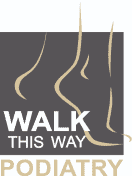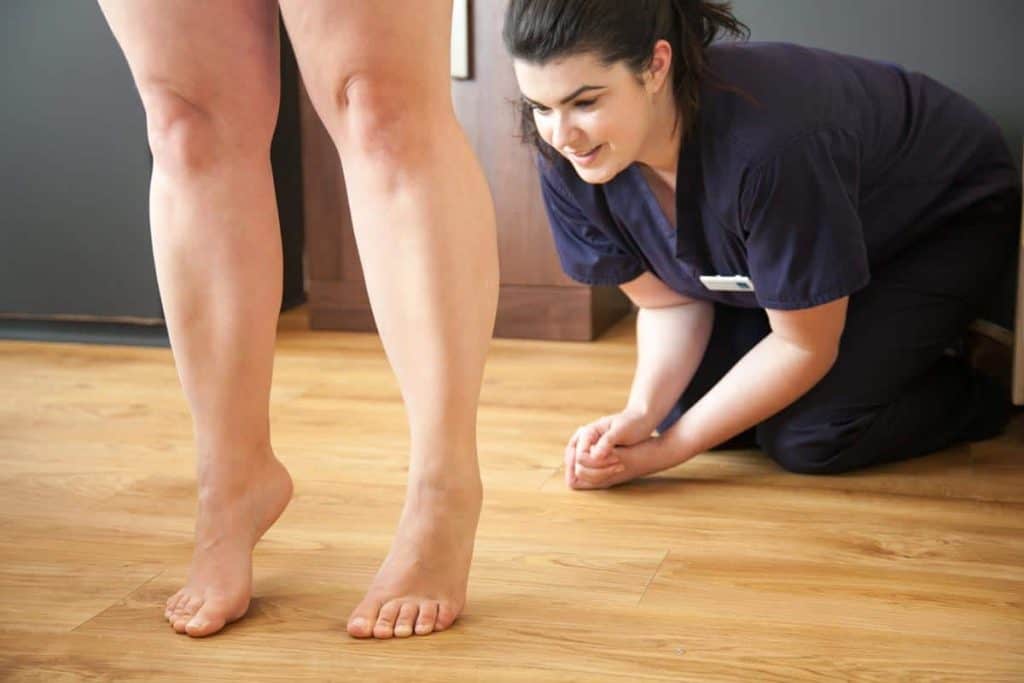Heel pain is a very common foot problem and can affect people of all ages. It can occur while walking due to the repetitive stress and impact that is placed on the feet with each step. This can be exacerbated by poor footwear or improper walking or running form. Overuse, sudden changes in physical activity, and excess weight can also contribute to heel pain while walking.
Being struck by heel pain doesn’t necessarily mean that there is an underlying medical condition. Instead, it can happen due to the natural process of wear and tear as you age or, because of repetitive overuse.
Heel pain is a very common foot problem and can affect people of all ages. Being struck by heel pain doesn’t necessarily mean that there is an underlying medical condition. It can happen as a result of the natural process of wear and tear as you age or, because of repetitive overuse.
What does heel pain mean?
In most cases, this type of foot pain is the result of either trauma caused by an injury, such as a twist or something falling on the foot, or your foot mechanics, meaning some part of your foot is not functioning correctly as a result of repetitive movements and pounding of the heel.
If you suffer from acute heel pain, then chances are you have a foot and ankle disorder. This is because the areas of your foot typically affected by heel pain are under the heel or just behind it, where the Achilles tendon connects to the heel bone and the heel’s side.
Understanding what causes heel pain and its symptoms will help you manage it and reduce the likelihood of developing it in future.
These are some of the most common causes:
1. Plantar Fasciitis Probably the most common of heel pain causes, Plantar Fasciitis is related to the bottom of the heel pain. The plantar fascia is a soft connective tissue shaped like a bowstring that runs from your heel bone to the base of your toes. Its job is to support the arch of your foot and provide you with stability. If you accidentally damage this ligament and it becomes inflamed or partially torn, the repetitive “pulling” on it when you walk will cause you pain.
You may feel a stabbing pain with the first steps you take in the morning, as the ligament tends to tighten up after long periods of rest — when you sit or lay down — without putting any body weight on the foot.
The most common factors that can lead to Plantar Fasciitis are:
● Wearing shoes that offer little cushioning or support at the arch of your foot.
● Having tight calf muscles causes you to push your foot harder into the ground, putting a lot more tension through your plantar fascia and leading to trauma.
● Being on your feet for long periods of time, especially on a hard surface like concrete and wearing hard-soled footwear. This causes compression of the plantar fascia, where it attaches to your heel bone and a lot of strain, which can lead to trauma and pain.
● Being overweight as any increase in body weight, even if this is over time, puts extra strain on the tissues inside the feet, including the plantar fascia. In addition, the increased loading can cause trauma with each step.
● Increasing the intensity or duration of your regular exercise can suddenly cause the tissues in the sole of the foot to become aggravated, leading to heel pain.
Plantar fasciitis tends to be more common in people who overuse the soles of their feet. If you practice sports that involve sprinting, jumping and landing, such as football or tennis and run long distances, you have an increased risk of plantar fasciitis.
2. Achilles Tendinopathy This is a condition that affects the Achilles tendon, which is located behind your heel, connecting your calf muscles to your heel. Hence Achilles Tendonitis is associated with back-of-the-heel pain.
When you repetitively put too much strain on this tendon, it can become inflamed, causing pain at the back of your heel.
This is why it’s a condition that’s more likely to develop when you push your body too hard. For example, if you run and decide to increase the number of miles you cover in a day without giving your body a chance to adjust to the new distance, you are more at risk of developing Achilles tendonitis.
It may also occur if you have tight calf muscles and decide to start an aggressive exercise programme that can put extra stress on the Achilles tendon.
3. Heel Spur A heel spur is a bone growth that can occur at the bottom of your heel. It can be pointy, hooked, or shelf-like and extend all the way from the underside to the arch of your foot.
Heel spurs are not always painful. However, if a bone spur is pressing on other bones or tissues or is causing a muscle or tendon to rub, it can break that tissue down over time, triggering swelling, pain, and tearing. It can also prompt the appearance of corns and calluses when tissue builds up to provide added padding over the bone spur.
When this happens, you may feel some pain or tenderness over the weight-bearing part of the bottom of the heel and might be able to feel the bump of the bone spur when you touch the affected area.
4. Heel Bursitis This condition develops when there is inflammation of the fluid-filled sac (bursa) at the back of the heel bone. The function of a bursa is to act as a cushion and lubricant between tendons and muscles, sliding over the bone.
You have a bursa, called retrocalcaneal, which sits at the back of your ankle by the heel. It is where the Achilles tendon connects your calf muscles to the heel bone. Hence, it is a heel pain condition frequently linked to Achilles tendinitis. When you overuse your ankle from overdoing certain activities, such as walking, running or jumping, you can cause this bursa to become irritated and swollen.
This can lead to experiencing discomfort at the back of your heel, especially with walking, running, or touching the area. The pain may get worse when standing on top toes.
You are more at risk of heel bursitis if you increase your level of exercise without allowing your body time to adjust or start a very intense workout routine that puts a lot of pressure on your body.
5. Heel bone fractures These are usually the result of a traumatic event ‒ falling from a significant height, such as a ladder or being in a car accident where the heel is crushed against the floorboard.
Heel bone fractures can also occur with other types of injuries, such as an ankle sprain or repetitive stress on the heel bone from regular, impactful exercise.
As you age, the fat pads of your heel get thinner and weaker, making you more susceptible to developing some of the above conditions. Moreover, if you have arthritis, you are also more likely to experience heel pain. .
When is heel pain serious?
While most heel pain is not serious, some cases can indicate a more severe condition. If your heel pain is severe, persists for several weeks, or is accompanied by swelling, redness, or warmth in the affected area, it is crucial to seek medical attention. Additionally, if you have diabetes or other conditions affecting circulation or nerve function, you should seek medical attention for any heel pain.
How do you relieve heel pain?
There are several options available to relieve heel pain. Rest is one of the most important things to do. Avoid activities that cause pain, and try to stay off your feet as much as possible. Apply ice to the affected area for 20 minutes at a time, several times a day. Over-the-counter pain relievers such as ibuprofen or acetaminophen can also help to alleviate discomfort. Wearing supportive shoes with good arch support and cushioning can also help to reduce pain.
In conclusion, if you are experiencing heel pain, you should avoid performing any aggravating activities until the pain subsides. Heel pain is a stubborn foot condition that can take much time and effort to be resolved. However, there are a number of heel pain treatment options depending on the symptoms, which can be discussed with you after performing a complete diagnosis of your condition.
A podiatrist should check your feet as soon as you start experiencing pain or any abnormalities. The earlier a condition is treated, the earlier you can return to your routine. Book a consultation.








